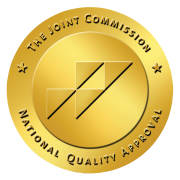Social Anxiety or Generalized Anxiety?
Sarah had always been a shy person, but as she grew older, her shyness turned into something much more intense. She found herself avoiding social situations at all costs, skipping family gatherings and even turning down invitations to hang out with her closest friends if they were going out to see other people.
She would worry for days before an event, imagining all the ways she could embarrass herself or say something wrong. This is the beginnings of social anxiety disorder. It might seem like an intense shyness to some, but it can be a debilitating disorder creates isolation and loneliness.
Sarah has symptoms of social anxiety.
On the other hand, meet John. John was always a bit of a worrier, but in recent years, his worries had gotten out of control. He found himself constantly overthinking everything—from his health to his job to the state of the world. He had trouble sleeping, had frequent panic attacks, and John was constantly in a state of neurosis.
John has symptoms of generalized anxiety.
Beyond Feeling Nervous
While some anxiety is normal in people, it is when you have constant and overwhelming emotions that they are characterized as anxiety disorders.
Anxiety disorders affect 19.1% of people in the U.S. according to this report. Social anxiety disorder (SAD) and generalized anxiety disorder (GAD) are two anxiety disorders. Social anxiety disorder often makes people feel self-conscious, anxious, and they may experience physical symptoms such as sweating, trembling, and an increased heart rate when they are in or about to be in a social situation.
Generalized anxiety disorder occurs when you are constantly worried about everything including health, money, relationship, lifestyle, education, or even things that are not under your control.
Understanding Social Anxiety Disorder
If you are anxious to the degree that it is affecting your life in a negative way in any kind of social situation whether, at work or a social engagement, you may well have SAD.
Symptoms of social anxiety disorder include fear of meeting people, fear of embarrassment and ridicule, blanking out, not registering anything mentally, and more. These can manifest as physical symptoms like sweating, rapid heartbeat (even palpitations), blushing, feeling breathless, and others.
Any kind of social situation may be a trigger for social anxiety disorder. Whenever you are meeting anyone you may feel anxious about talking, eating, or even your appearance in front of them.
Understanding Generalized Anxiety Disorder
When you feel unreasonable fear and anxiety about things that you may not even have any control over, and this feeling is constant, that is likely generalized anxiety disorder.
Symptoms of generalized anxiety disorder include persistent worry about everything, unable to relax and being constantly on an edge, muscle tension, sweating, sleep disturbances, a feeling of panic, aches, pains, and the like.
Triggers for generalized anxiety disorder include health, medical, financial, work, and other issues that may or may not be real since the worry is disproportionate to the actual issues.
Differences between Social Anxiety Disorder and Generalized Anxiety Disorder
The main difference between SAD and GAD is the focus of the anxiety. Social anxiety disorder is characterized by fear in such places as public speaking, meeting new people, or being observed by others. In contrast, generalized anxiety disorder involves excessive worry and anxiety about a wide range of everyday situations, including health, finances, work, and relationships.
The other big difference is in the way they are treated. For example, cognitive-behavioral therapy is often used to treat both disorders, but the focus of the therapy may be different. In SAD, the focus may be on improving social skills and reducing avoidance behaviors, while in GAD, the focus may be on identifying and changing negative thought patterns.
Getting Help for Anxiety Disorders
No matter what, anxiety disorders are tough to live with. They will disrupt your life and could lead to isolation and depression. If you are experiencing excessive worry, fear, panic, avoidance behaviors, and physical symptoms such as sweating, trembling, or heart palpitations, it may be a good idea to reach out for help. Mental heath issues don’t typically just go away. But, with help, they can be managed to the point where they have little ability to cause harm.
Remember, getting help for anxiety disorders is a process, and it may take time to find the right treatment for you. If you want to talk to someone about GAD or SAD, call Lido Wellness Center in Newport Beach today. Our mental health services in Newport Beach are designed to help individuals with anxiety and other disorders that affect millions of people across the country.




